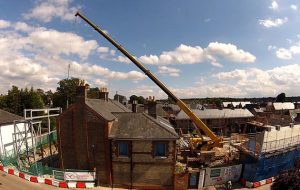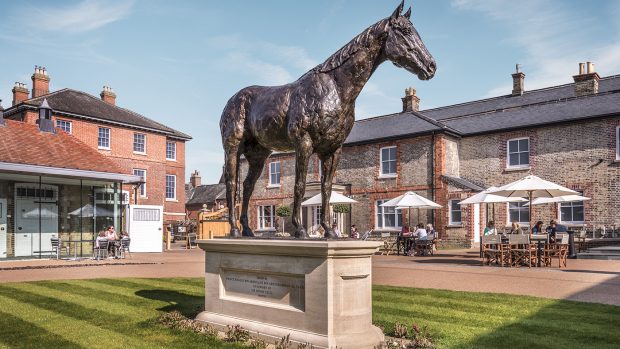A solitary horse skeleton — which is thought be several centuries old — has been discovered after excavations at Charles II’s Palace House in Newmarket earlier this month.
Palace House was built by Charles II in the 17th century, as a grand residence allowing him to be as close as possible to his beloved racehorses. The skeleton was found in the Rothschild Yard, built by Leopold de Rothschild in 1903 as an extension to the Kings Yard.
The skeleton was uncovered during construction works for redevelopment of the site for the new National Heritage Centre for Horse Racing and Sporting Art, due to open in early 2016. It is believed by historians that it could have been interred as long ago as 1750.

There is speculation that the horses position — underneath the outdoor yard — could indicate that he was a special favourite of the King. The skeleton has a smashed skull and pelvis and is estimated to have died at around the age of 18.
Some archaeologists have also suggested that it could be the skeleton of legendary 19th century stallion Doctors Syntax whose body has never been discovered.
Chris Faine of Oxford Archaeology, which is currently holding the skeleton for conservation, said: “While the date of the burial is uncertain, pottery fragments found underneath it date back to the 1750s.
 “The skull was heavily smashed so we cannot assess exact cause of death. It may have been put to sleep humanely although based on the evidence that we have, we can’t be sure”.
“The skull was heavily smashed so we cannot assess exact cause of death. It may have been put to sleep humanely although based on the evidence that we have, we can’t be sure”.
Briony Jackson, science learning and participation officer at the National Horseracing Museum added: “We are delighted to find the skeleton and would like to thank Alison Schwabe, a vet from Cambridge Veterinary School, and Mim Bower, post-doctoral researcher in Archaeogenetics at Cambridge University, for their contribution to determining the information we have to date and would be delighted to hear from anyone who might be able to help us further in the identification of the horse”.
The National Horse Racing Museum can be contacted on 01638 667333.





